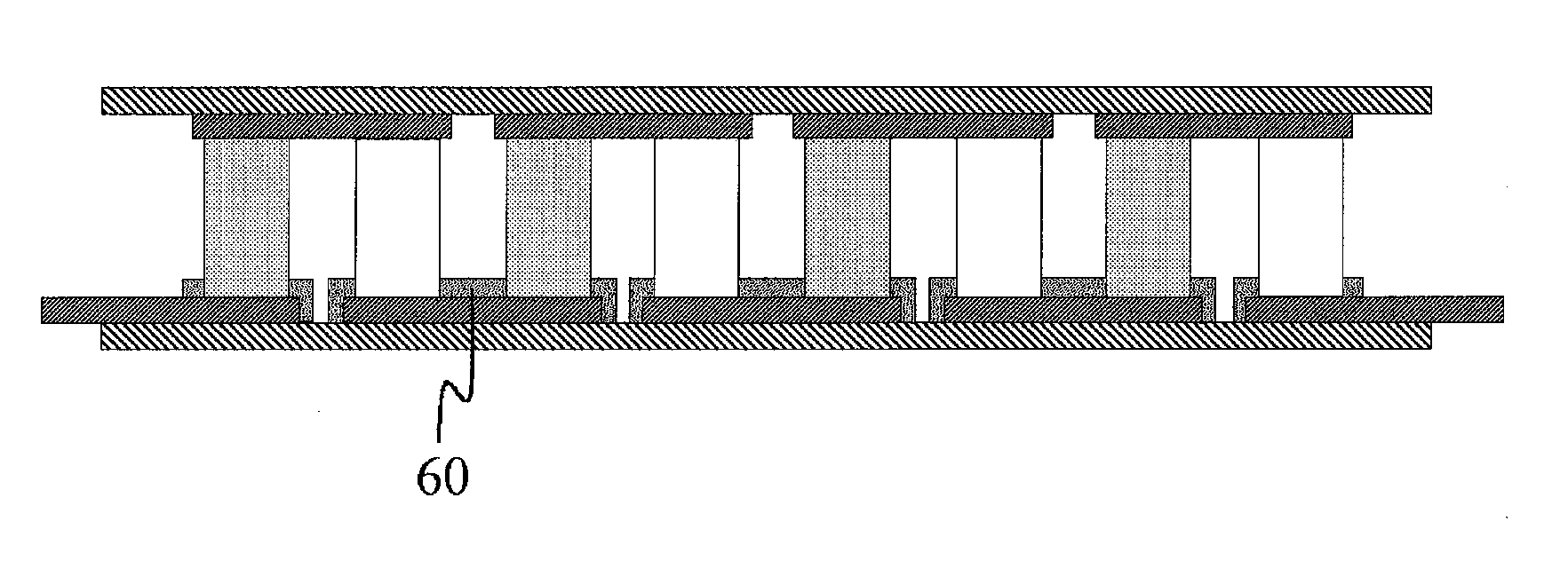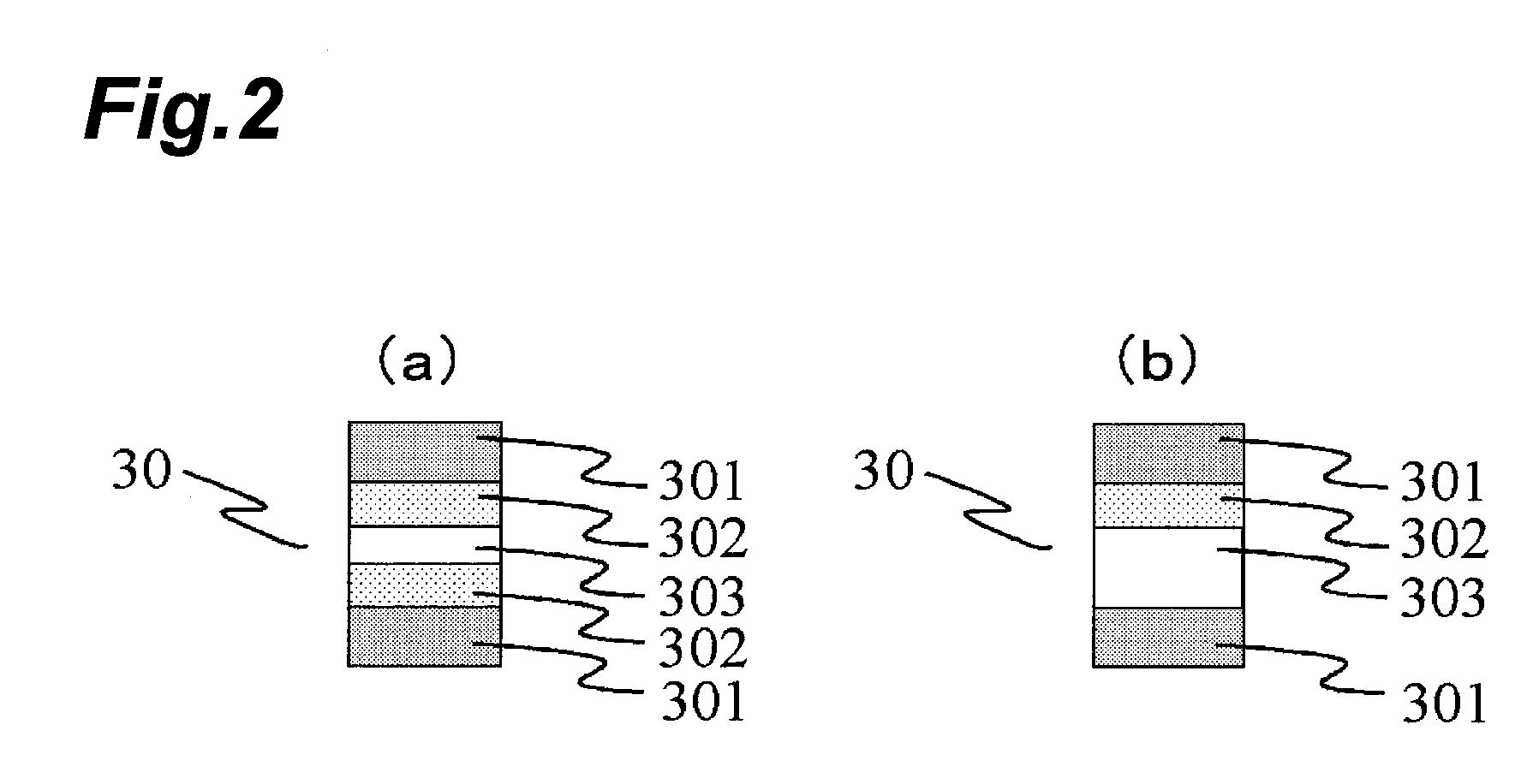Thermoelectric conversion module and thermoelectric conversion element
a technology of thermoelectric conversion module and conversion element, which is applied in the direction of thermoelectric device junction materials, electrical apparatus, and thermoelectric device with peltier/seeback effect, etc., can solve the problems of breaking the jointing layer made of the jointing material, and achieve the effect of suppressing thermal stress
- Summary
- Abstract
- Description
- Claims
- Application Information
AI Technical Summary
Benefits of technology
Problems solved by technology
Method used
Image
Examples
example 1
First Layer: 70% by Mole Thermoelectric Conversion Material (CaMn0.98Mo0.02O3+CuO)+30% by Mole Conductive Metal (Ag); Second Layer: 100% by Mole Thermoelectric Conversion Material (CaMn0.98Mo0.02O3+CuO)
[0068]After weighing out:
8.577 g of CaCO3 (trade name: CS3N-A, by Ube Material Industries, Ltd.),
7.852 g of MnO2 (product of Kojundo Chemical Lab. Co., Ltd.),
0.247 g of MoO3 (product of Kojundo Chemical Lab. Co., Ltd.),
0.359 g of CuO (product of Kojundo Chemical Lab. Co., Ltd.), and
4.482 g of Ag2O (product of Kojundo Chemical Lab. Co., Ltd.),
they were mixed for 20 hours with a wet ball mill (medium: zirconia ball) and held in air at 900° C. for 10 hours to be calcined, obtaining a calcined product thereby. The calcined product was pulverized for 20 hours with a wet ball mill (medium: zirconia ball) to obtain powder 1 (powder for formation of the first layer). Powder 1 had the same type of crystal structure as perovskite-type crystals of CaMnO3. An Ag crystal structure peak was detecte...
example 2
First Layer: 80% by Mole Thermoelectric Conversion Material (CaMn0.98Mo0.02O3+CuO)+20% by Mole Conductive Metal (Ag); Second Layer: 100 Mol % Thermoelectric Conversion Material (CaMn0.98MO0.02O3+CuO)
[0072]Sintered body 3 was fabricated in the same manner as Example 1, except that the amount of Ag2O for production of powder 1 was changed to 2.614 g. Sintered body 3 had a contact resistance of 25, which was low relative to sintered body 1. Because of the low contact resistance, sintered body 3 is suitable as a thermoelectric conversion element in a thermoelectric conversion module in which the thermoelectric conversion elements and electrodes are electrically connected without joints.
[0073]Ag plates (2 plates in total) were, without a joint, attached to both ends of sintered body 3 and the element-electrode link was formed by applying a pressure of 2 kg / cm2. The element-electrode resistance in the link was 0.2Ω. A thermal cycle of the link was performed repeatedly in the same manner a...
PUM
| Property | Measurement | Unit |
|---|---|---|
| temperatures | aaaaa | aaaaa |
| molar ratio | aaaaa | aaaaa |
| conductive | aaaaa | aaaaa |
Abstract
Description
Claims
Application Information
 Login to View More
Login to View More - R&D
- Intellectual Property
- Life Sciences
- Materials
- Tech Scout
- Unparalleled Data Quality
- Higher Quality Content
- 60% Fewer Hallucinations
Browse by: Latest US Patents, China's latest patents, Technical Efficacy Thesaurus, Application Domain, Technology Topic, Popular Technical Reports.
© 2025 PatSnap. All rights reserved.Legal|Privacy policy|Modern Slavery Act Transparency Statement|Sitemap|About US| Contact US: help@patsnap.com



